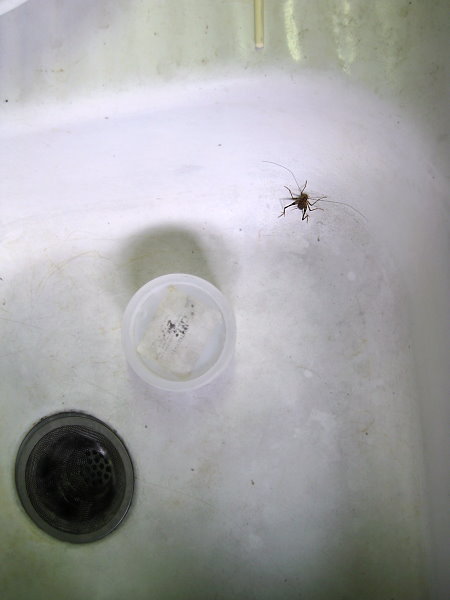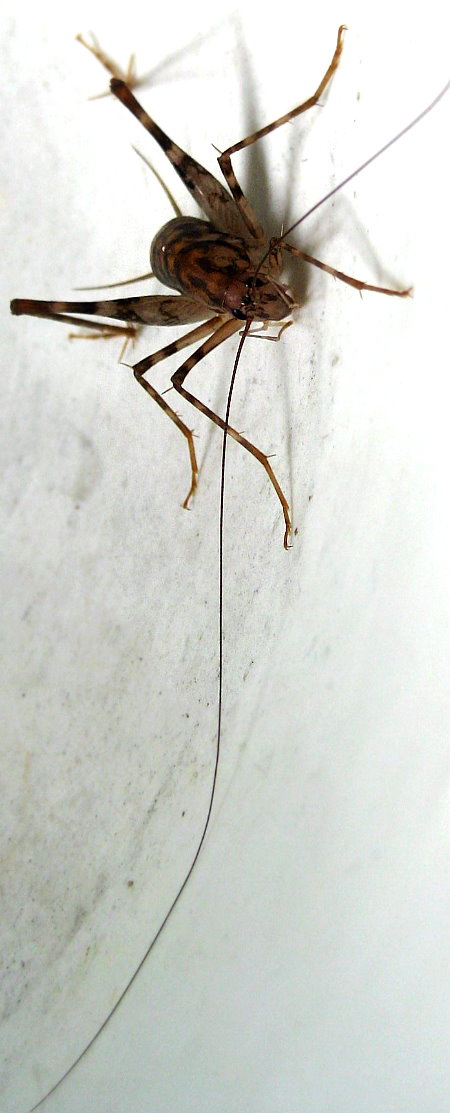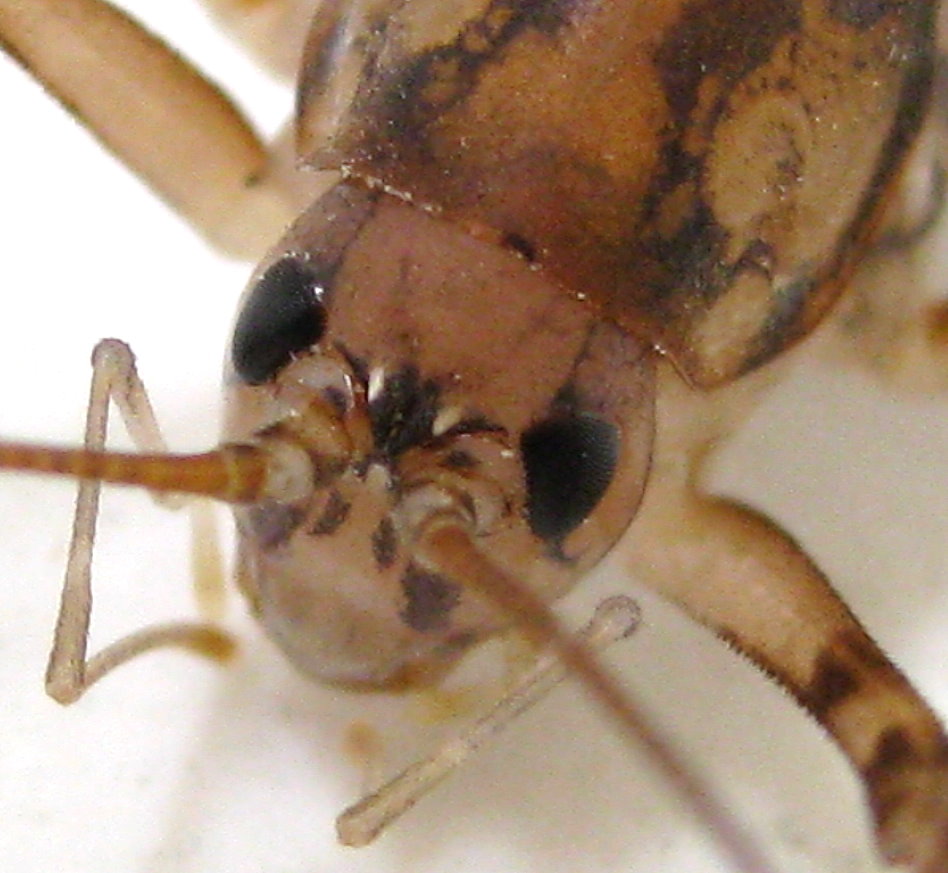I followed Erich’s example and (after doing extensive independent research) bought the same camera that he’s been brandishing and bragging about. I needed an adequate camera that fits in any pocket, and the Canon SD1100SI ELPH fits the bill. It’s slightly larger than my cell phone, but smaller than my wallet.
After his Holly post, I wondered what this thing would do for small objects. This morning I found a volunteer as I went to etch some titanium in my basement sink. I used natural light and hand held the camera. My model held obligingly still.

Some morning light came from the window, and 34 watt fluorescent tubes were overhead. The camera guessed daylight for the white balance, so the sink seems a bit green.
Below you can ooh and ahh at his (her?) long whiskers. Longer than mine, certainly in comparison. But those climbing spikes are impressive, too.

So, I tried to push the limits of the camera, and got up close and personal with my captive model.

I did get the little predator out of the sink before getting to work. I don’t know whether to be concerned that she (he?) is finding enough to eat in my home. The spiders and centipedes keep the place pretty clean (besides the occasional carcass and web cleanup).


Dan: Those photos are extraordinary! As you know, I only recently discovered that there is a "digital macro" function on this model that would allowed these sorts of close-ups. It shocked me that I could get such a close shot of a mosquito, for instance.
Your photos are sharp and delightful. I didn't realize that crickets are translucent. That macro feature opens up an entire new world.
I'll mention (since you didn't on your post) that you bought the camera for only about $160 and you got 4 Gb of RAM for only another $10. I've bragged about the camera to many people for many reasons. But the SD1100SI does include some terrific features (such as image stabilization) that you wouldn't expect to find in a camera that small and that cheap. I'm finding, more and more, that I like to use the "Photo-stitch" software that allows for really stretched out panoramas.
I liked the Canon SE1100SI for the size, just as you mentioned. I wanted a stronger optical zoom and considered several alternative models, but choosing even a slightly bigger camera would mean that I wouldn't be as inclined to bring it along wherever I went.
Welcome to the SD1100SI club!
We had to raise crickets in elementary school science; the species we used, at least, were herbivores.
Great magnification on that camera! How nice to have such a cooperative model.
"Crickets require a high-protein diet. Without, and often with, an adequate diet the crickets will prey on each other." from <a href="http://www.anapsid.org/crickets.html,” target=”_blank”>www.anapsid.org/crickets.html, a site about care for reptiles explaining how to raise crickets to save on feeding costs. So crickets are not just omnivores, but willing cannibals.
Although crickets, like humans, can survive on a vegetarian diet, they thrive on a partially animal diet.
Actually, the critter in the photos is a closely related species to the common crcket and is commonly called a "cave cricket". In the South they are often called katydids because of their long antennae
I readily admit that I'm better at etymology than entomology. Anyone want to take a stab at genus/species/gender?
Common Field cricket and the Cave Cricket
http://insects.tamu.edu/fieldguide/aimg17.html
Spotted Camel Cricket ?
http://www.insectidentification.org/insect-description.asp?identification=Spotted-Camel-Cricket